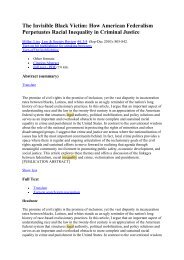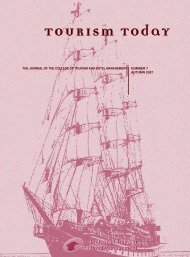Foreign Investment Strategies and Sub-national ... - E-Journal
Foreign Investment Strategies and Sub-national ... - E-Journal
Foreign Investment Strategies and Sub-national ... - E-Journal
Create successful ePaper yourself
Turn your PDF publications into a flip-book with our unique Google optimized e-Paper software.
H1b: The more state-owned enterprises dominate a sub-<strong>national</strong> region, the less FDI the region attracts.<br />
3.2. Institutions <strong>and</strong> Mode Choice<br />
Institutions not only influence foreign investors’ preferred location but also the entry mode they may<br />
choose at a given location (Gomes-Casseres 1990, Meyer 2001). Entry mode literature has drawn, in<br />
particular, on transaction cost economics as its theoretical foundation. However, empirical studies have<br />
focused on firm-specific variables that drive transaction costs, rather than context-specific variation, which is<br />
of particular concern in emerging economies.<br />
Markets are subject to market failure to different degrees, which affects multi<strong>national</strong> firms’<br />
preference for internalizing these markets (Buckley <strong>and</strong> Casson 1976, Hennart 1988, 1991, Anderson <strong>and</strong><br />
Gatignon 1986). Multi<strong>national</strong> firms often consider JVs as the second-best mode of entry because JVs<br />
provide only a limited degree of control over the local operation <strong>and</strong> reduce the investor’s flexibility to<br />
change the arrangement. Hence, JVs are only used if specific conditions apply: (1) the project depends on<br />
contributions from two or more partners; (2) the markets for the contributions from the parents are subject to<br />
market failure, i.e. transaction costs are high; (3) it is not feasible to internalise the whole operation with one<br />
partner taking over the other(s) (Buckley <strong>and</strong> Casson 1976, 1998, Hennart 1988). The first two are conditions<br />
for foreign investors to seek collaboration with a local partner rather than establish a Greenfield operation.<br />
The third condition distinguishes acquisition from JV entry.<br />
Location factors influence entry modes, in that investors are willing to make larger commitments to<br />
countries with higher market potential. This has been shown, for instance, by Agarwal <strong>and</strong> Ramaswani (1992),<br />
who incorporate market size <strong>and</strong> growth with institutional factors, such as ‘government attitude’, into a single<br />
construct ‘market potential’. In this study, we separate this influence. The local institutional framework shapes<br />
transaction costs (North 1990), <strong>and</strong> thus influences entry mode choice (Meyer 2001). It also establishes which<br />
options are legally permitted in a given context <strong>and</strong> has some bearing on the contributions that foreign investors<br />
may require from local partners.<br />
15














